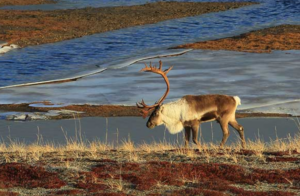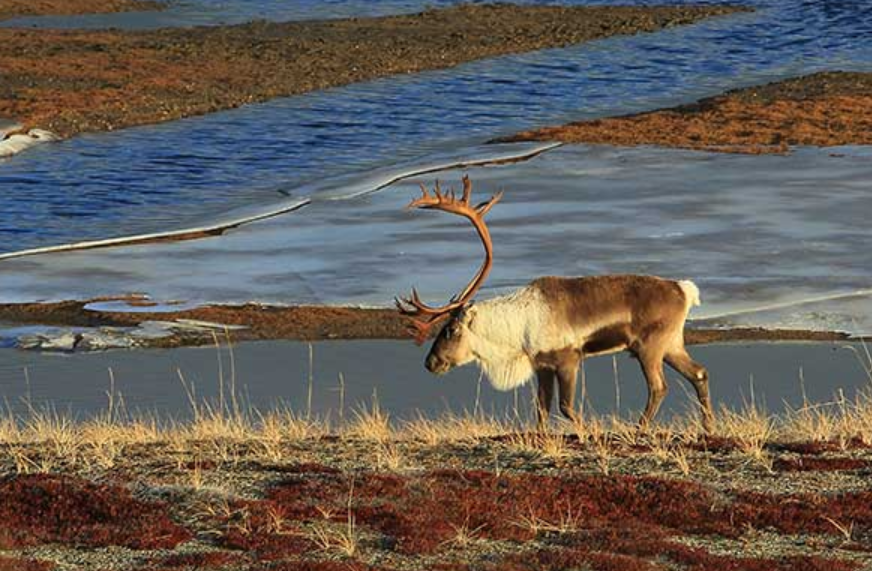
There is a new name to add to the list of catastrophic climate failures by the Biden Administration: Alaska LNG.
Even mega fossil fuel projects that experts believed would never get built because they are just too big, financially risky, and expensive are now getting the Biden green light. And the $40 billion Alaska LNG is one of those projects.
The Alaskan LNG project involves building an 800-mile (1,300km) gas pipeline from the North Slope to Cook Inlet. It is designed to market Alaskan gas that is produced from oil wells on the North Slope, which has been flared off or pumped underground for years due to a lack of demand.
The project is so expensive and technologically difficult that for years it has been written off by those in the oil industry and even the fossil-fuel-loving Donald Trump.
But it has been resurrected by the Biden Administration, under pressure from the State of Alaska, which owns the company, Alaska Gasline Development Corporation, developing the project.
For some reason, Biden has a blind spot with fossil fuels, locking the US into decades of oil and gas expansion and use, just when the climate scientists say we cannot afford to expand fossil fuels if we want a liveable future. Alaska LNG is a big deal for a number of reasons:
Firstly, it comes so soon after Biden approved the controversial Willow project, which included the approval of three new oil drilling pads offshore in Alaska. Approving Willow was already seen as a climate disaster. At the time, my colleague, Allie Rosenbluth, said that Biden “was approving new drilling at a faster rate than the Trump administration … The United States has no claim to international climate leadership if it’s approving deadly new fossil fuel projects that could operate for decades.”
But secondly, Alaska LNG would have a much bigger climatic impact than Willow. It would be the third largest LNG terminal in the US, after Sabine Pass and Corpus Christi on the Gulf Coast. It would ship some 20 million metric tons of gas a year, predominantly to markets in Asia.
“Alaska LNG is a carbon bomb 10 times the size of Willow,” Lukas Ross, program manager at the Friends of the Earth, told Politico. It has been estimated that the project would spew the equivalent of 1.5 billion tons of carbon dioxide into the atmosphere over its 30-year lifetime, which has been likened to burning more than 8 million rail cars full of coal.
Thirdly, Alaska LNG is stupendously expensive. It will cost around $40 billion to build if it stays within budget, which seems unlikely. This is about 2 times the cost of other LNG projects.
And it can only be built with a range of lucrative federal and state subsidies, including federal loan guarantees and 45Q tax credits. The latter tax credit is for re-injecting unwanted CO2 underground either to help pump out more oil and gas or for more permanent storage.
Fourthly, it is already a decade late and will take at least another decade to build. The risks to the project are huge – from policy to market risks.
And finally, the project brings great safety and ecological risks beyond emitting carbon. Building an 800-mile pipeline across the whole of Alaska from the North Slope to Cook Inlet across remote and challenging terrain will impact migrating wildlife as well as the ecological impact of construction camps and vehicles.
The pipeline route will mirror that of the existing Trans Alaskan Pipeline System, known as TAPs, which transports oil. The oil industry has a history of negligence and nefariousness in Alaska.
Years ago, I worked with the Guardian newspaper, exposing the concerns and fears of six brave oil industry whistleblowers. Back in 1999, the whistleblowers wrote to BP’s then chief executive, Sir John Browne, and three US congressmen warning of an imminent threat to human life and the Alaskan environment from irresponsible oil operations there.
The letter contained evidence of compliance failures, falsified safety and inspection records, intimidation of workers, persistent violations of procedures and compliance failures and government regulations, as well as illegalities and mismanagement on TAPs.
Beyond the safety and ecological issues onshore, the project could also devastate marine wildlife. Cook Inlet is a sensitive marine habitat for endangered beluga whales.
Building another pipeline risks repeating the mistakes of the past, locking us into dirty gas for decades, just when we should be building renewables for the future. It is no wonder that politicians and civil society alike have condemned Biden’s decision.
Another massive fossil project from a president who promised to drive the transition to renewables! We have to lead by the power of our example—this is exactly the wrong example for the world! https://t.co/IZZjD7UOkG
— Senator Jeff Merkley (@SenJeffMerkley) April 17, 2023
In addition, Erin Colón, an Earthjustice senior attorney based in Juneau, Alaska, says: “Not only is the Alaska LNG project unnecessary given the widespread transition to clean-energy alternatives we expect to see in the years to come, it’s also a major threat to ecosystems and climate in Alaska.
Colón adds, “It’s frustrating to see the Department of Energy rubber-stamp a massive fossil-fuel infrastructure project of this kind when it clearly conflicts with the urgent need to tackle the climate crisis.”


You are destroying our home
What the F–K is going on in Washington? You guys pay lip service to decrease Global Warming in one breathe, and you approve projects that will increase Global Warming in the other. Are you all (and I am referring to the President, the V.P. and Congress) deaf, dumb and blind? You people have all lost my respect and my vote. I wouldn’t vote for any of you to run a children’s amusement park . You in Washington would probably make it dangerous for kids to play there.
Just my opinion, without prejudice from an 84 year old citizen.
Allan Weiss